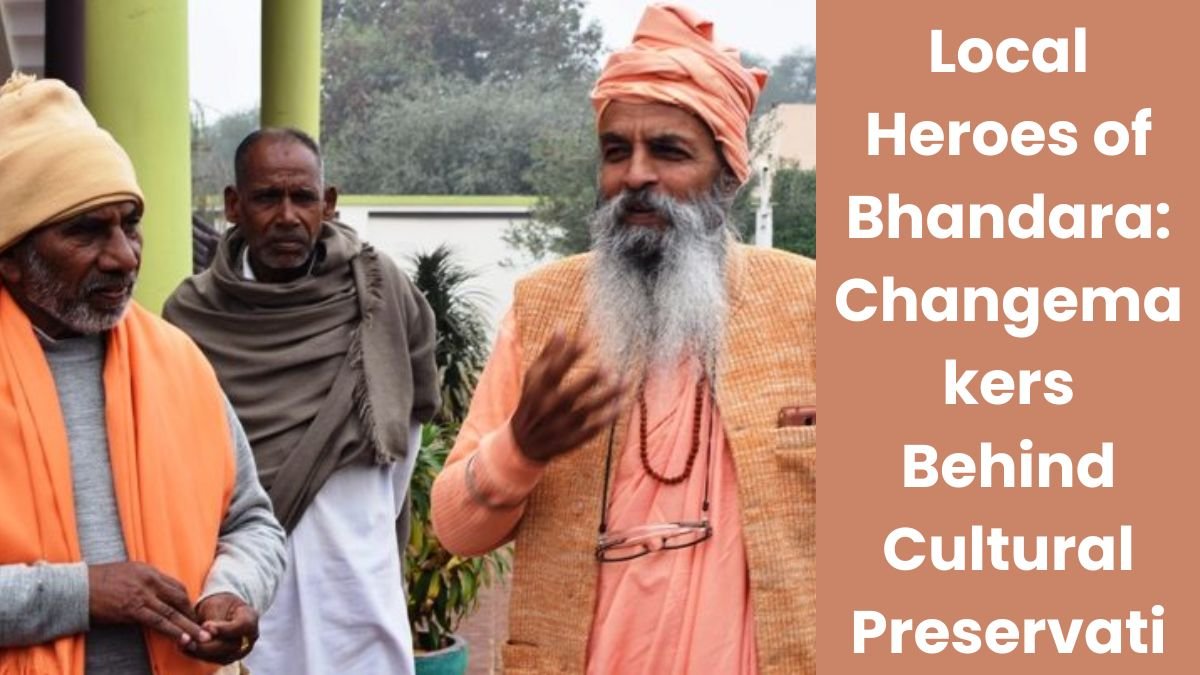Whenever we hear the name of Bhandara district, the first thing that comes to our mind is its lush green fields, beautiful ponds, historical temples and traditional festivals. But behind keeping this cultural splendor alive and flourishing even today, there are some people who neither make headlines in newspapers nor remain in the limelight on social media. These are our folk heroes of Bhandara, who are working to preserve the cultural heritage of the district with their dedication, hard work and passion.
This article brings to light the true stories of those people, due to whose efforts the culture of Bhandara is still alive. They may be teachers, folk artists, farmers, panchayat members, or social workers—but their identity is only one: they are cultural protectors.
Why is cultural preservation needed?
In the modernization and digital age, where the new generation is getting away from their roots, traditional festivals, folk dances, languages and customs are slowly becoming extinct. In such a situation, it becomes necessary that there should be someone who not only saves this heritage, but also passes it on to the new generation. Some true sons of Bhandara are doing just this—at their own level, with their own resources.
Shri Dattuji Borkar – Protector of Folk Dance
Whenever there is talk of Gondwana folk dance, the name of Shri Dattuji Borkar of Salekhur, a small village in Bhandara, naturally comes to the fore. For the last 25 years, he has been training children and youth free of cost in the traditional dances of the Gond community, ‘Dhindal’ and ‘Java Nritya’.
He believes that “a dance is not just the movement of the body, it is the experience of generations and the soul of the culture. He has trained more than 300 students so far, and his group has also won many awards at the district and state level.
Mrs. Maya Deshmukh – soldier of dialect and folklore
Maya Deshmukh of Lakhani block of Bhandaara is a retired teacher, but her real identity is made from her work for dialect and folklore. She has collected folktales and traditional sayings by going from village to village to preserve the Kosare dialect, which is now considered endangered.
She has recently published a book for children—”Majhya Aajichya Goshti”—which contains traditional stories in Kosare dialect. Her dream is that the coming generations adopt this dialect and speak it with pride.
Pandit Vasantrao Hingne – priest who revives the tradition of folk deities
In every village in Bhandaara, some folk deity is worshipped—like Khande Rao, Bhairav Baba, or Gauri-Ganpati. But it is becoming difficult to follow these worship rituals and traditions properly in today’s age.
Pandit Vasantrao Hingne, himself a local priest, has been preserving these rituals for the past 40 years. He has created a handwritten guide called “Bhandara Lok Pujan Paddhati”, which is distributed free of cost to the village youth. He also visits villages every year to train in puja rituals.
Raja Rathore – Artist brings history alive with clay idols
Clay idols have a special significance in the folk art of Bhandara. Raja Rathore is an artist who doesn’t just make idols, but also infuses the colours of history and identity into them.
He has started a unique workshop called “Mati Samvaad” where children are taught how to make idols of Mata Gauri, Mahalakshmi, Maratha warriors, or village deities. His artworks are today displayed in schools and cultural fairs in several districts.
Women from Gram Panchayat – Restoring culture through collective efforts
The women of Bhandaara’s Kuhi Panchayat organize traditional festivals like Hariyali Amavasya, Halashashti, and Ashadha Ekadashi every year. They organize events centering on folk songs, traditional cuisine, and traditional women’s costumes.
The purpose behind these events is to make children and youth aware of the importance of these festivals. These women believe that “culture begins at home and women are the foundation of the home.”
Inspiration for the new generation
- The stories of these folk heroes are not just inspiring, but an example of how small efforts can bring about big changes.
- Be it folk dance, language, sculpture, or festivals these heroes of Bhandaara are leaving a legacy for generations to come.
- Young people should adopt these efforts, become partners, and take this cultural heritage to new heights with technology and innovation.
Conclusion:
Today, when culture is under pressure from commercialism and Western influence, there is a great need to recognise, honour and support these local heroes. The government, local bodies, and educational institutions should document such efforts, support them, and connect the younger generation with them.
The soil of Bhandara is not just of rice and fish, but also of art, tradition and glorious cultural values. And the real stars who keep these values alive are the folk heroes of Bhandara.
